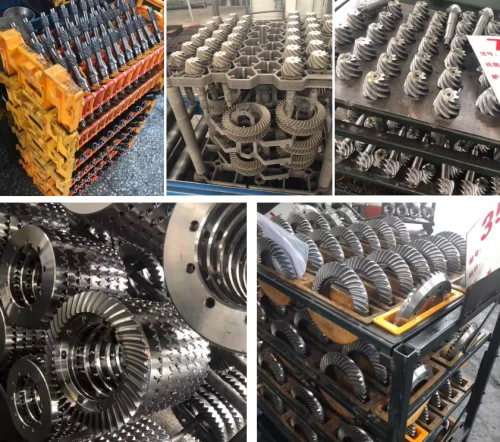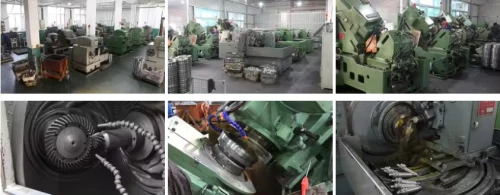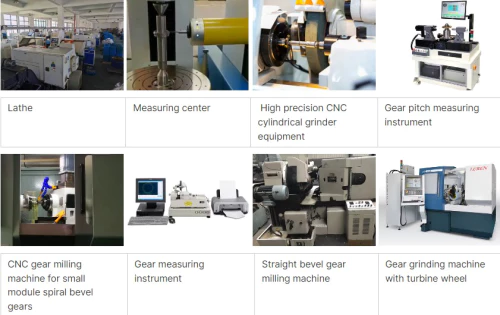What are the key steps involved in forging bevel gears?
Forging bevel gears are a type of bevel gears that are manufactured through the forging process. Forging involves shaping metal through the application of localized compressive forces, typically using a die or hammer. In the case of bevel gears, the forging process is used to form the gear teeth and create the desired gear geometry.
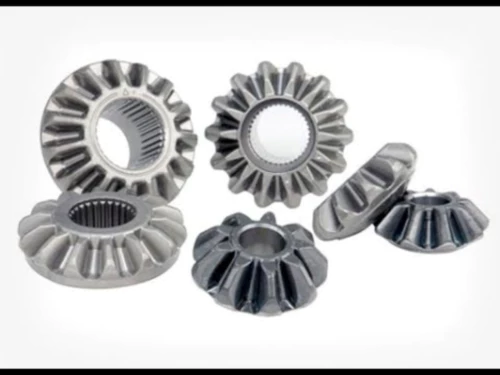
Advantages of Forging Bevel Gears
1. High Strength: Forging bevel gears are known for their high strength, making them suitable for heavy-duty applications.
2. Improved Fatigue Resistance: The forging process improves the fatigue resistance of bevel gears, ensuring their durability and long service life.
3. Precise Gear Tooth Geometry: By forging bevel gears, manufacturers can achieve precise gear tooth geometry, resulting in optimal gear performance.
4. Cost-Effectiveness: Forging bevel gears offer cost-effectiveness due to their high production efficiency and material utilization.
5. Versatility in Material Selection: Bevel gears can be forged from various materials, including steel, aluminum, and bronze, allowing for flexibility in material selection based on specific requirements.
6. Enhanced Structural Integrity: The forging process improves the structural integrity of bevel gears, ensuring their reliability and resistance to deformation.
7. Tailored Mechanical Properties: By controlling the forging process, manufacturers can tailor the mechanical properties of bevel gears to meet specific application needs.
8. Reduced Lead Time: Forging bevel gears can be produced efficiently, reducing lead time and improving overall production efficiency.
9. Environmental Sustainability: The forging process is known for its minimal waste generation and energy consumption, making it an environmentally sustainable manufacturing method.
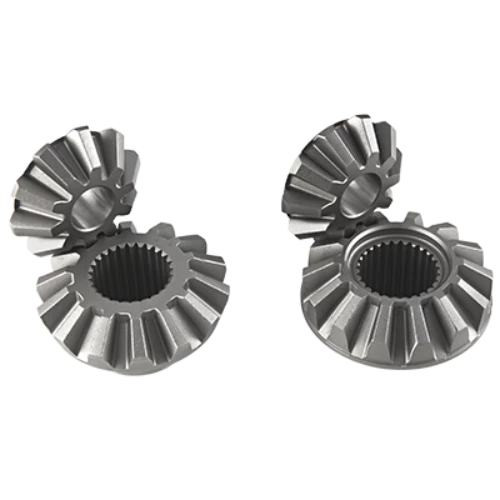
Working Principles of Forging Bevel Gears
Forging bevel gears operate based on the fundamental principles of gear mechanisms. They consist of two intersecting shafts, each with a conically shaped gear (bevel gear) mounted on it. The teeth of the bevel gears are designed to have a specific tooth profile, such as straight, spiral, or hypoid, depending on the application requirements.
When the input shaft rotates, the engagement of the teeth of the bevel gears causes a transfer of rotational motion and torque to the output shaft. The contact between the mating teeth ensures power transmission while maintaining proper alignment and smooth operation.
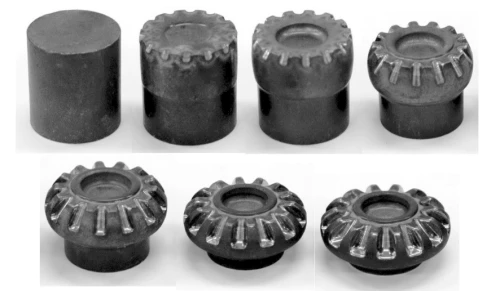
Applications of Forging Bevel Gears
1. Automotive Industry: Forging bevel gears are widely used in automotive applications, such as differential gears and transmission systems.
2. Industrial Machinery: Bevel gears find applications in various industrial machinery, including heavy-duty equipment, machine tools, and conveyors.
3. Aerospace and Defense: Bevel gears are crucial components in aerospace and defense systems, such as aircraft landing gear mechanisms and missile guidance systems.
4. Renewable Energy: Forging bevel gears are used in wind turbines and solar tracking systems to convert and transmit power efficiently.
5. Marine and Shipbuilding: Bevel gears are essential in marine propulsion systems, ship steering mechanisms, and marine winches.
6. Agricultural Machinery: Bevel gears are employed in agricultural machinery, such as tractors, harvesters, and irrigation systems, for various power transmission applications.
7. Power Generation: Bevel gears are utilized in power generation equipment, including hydroelectric turbines and steam turbines, for efficient power transmission.
8. Robotics and Automation: Forging bevel gears play a vital role in robotic systems and automation machinery, ensuring precise motion control and torque transfer.
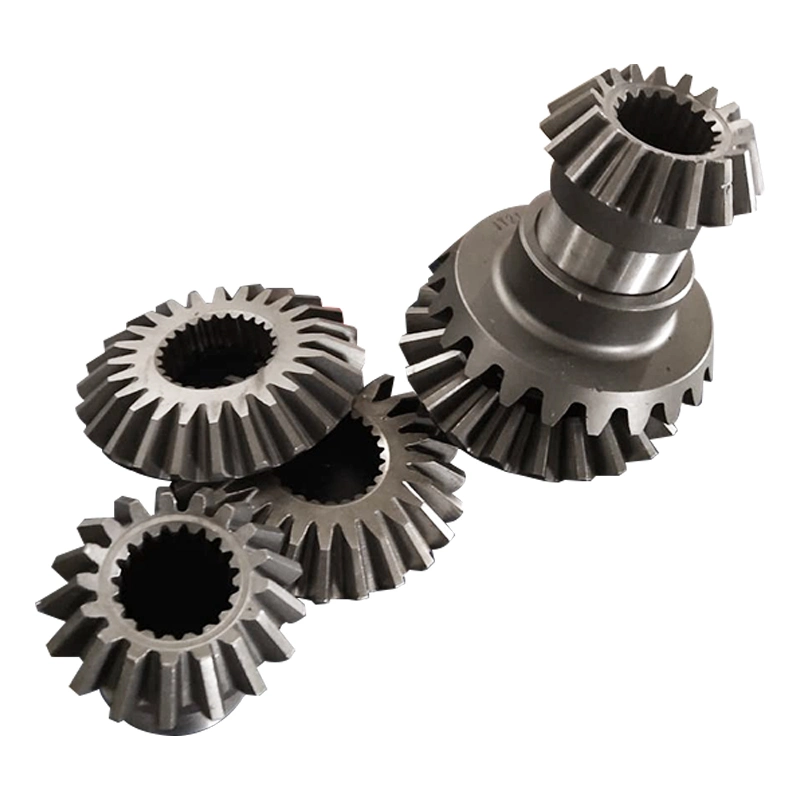
Installation and Maintenance of Forging Bevel Gears
Installation:
1. Proper Alignment: Ensure the accurate alignment of the bevel gears during installation to prevent misalignment and premature wear.
2. Lubrication: Apply suitable lubricants to the bevel gears to minimize friction and wear, extending their service life.
3. Mounting Bolts: Use appropriate mounting bolts and ensure proper tightening to secure the bevel gears in place.
4. Inspection: Thoroughly inspect the bevel gears and their components before installation to identify any defects or damage.
Maintenance:
1. Lubrication: Regularly lubricate the bevel gears to maintain optimal performance and minimize wear.
2. Cleaning: Keep the bevel gears clean and free from debris or contaminants that could interfere with their operation.
3. Inspection: Periodically inspect the bevel gears for signs of wear, damage, or misalignment and address any issues promptly.
4. Replacements: Replace worn or damaged bevel gears with new ones to ensure proper functioning and prevent equipment failure.
5. Gearbox Maintenance: If the bevel gears are part of a gearbox, follow the manufacturer's recommended maintenance procedures for the entire gearbox assembly.
6. Load Monitoring: Monitor the load and torque applied to the bevel gears to prevent excessive stress and premature failure.
7. Training and Expertise: Ensure that maintenance personnel are properly trained and have the necessary expertise to handle bevel gear maintenance effectively.
8. Record-Keeping: Maintain comprehensive records of maintenance activities, including inspections, lubrication schedules, and replacements, to track the performance and history of the bevel gears.
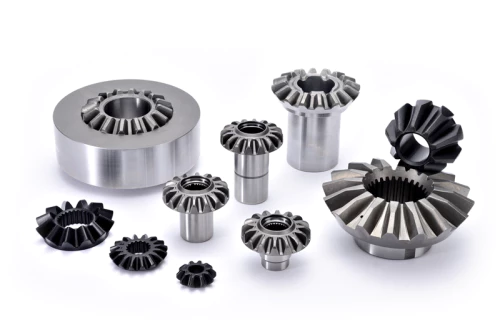
How to Select Suitable Forging Bevel Gears
1. Application Requirements: Consider the specific requirements of the application, such as load capacity, speed, and operating conditions.
2. Design and Specifications: Evaluate the design and specifications of the bevel gears to ensure they meet the application's dimensional and performance requirements.
3. Material Selection: Choose the appropriate material for the bevel gears based on factors like strength, durability, and compatibility with the operating environment.
4. Quality and Reliability: Select bevel gears from reputable manufacturers known for their high-quality and reliable products.
5. Load-Carrying Capacity: Determine the load-carrying capacity of the bevel gears to ensure they can handle the expected loads without failure.
6. Efficiency and Performance: Consider the gear efficiency and performance characteristics, such as noise level and backlash, to ensure optimal operation.
7. Customization and Adaptability: If necessary, choose bevel gears that can be customized or adapted to specific application requirements.
8. Cost Considerations: Evaluate the cost-effectiveness of the bevel gears, considering factors like initial cost, maintenance requirements, and overall value for money.
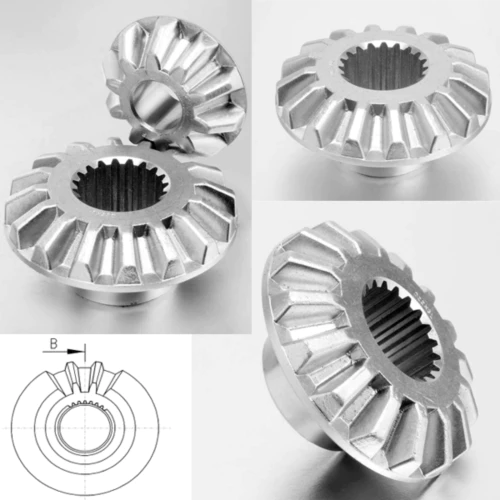
Focus on Shaoxing Chaoli
Shaoxing Chaoli is a professional manufacturer of gears in China. Our products are exported to different countries such as Spain, the Netherlands, the United States, South Korea, Turkey, and Russia. At the same time, we sincerely hope to help customers develop new products and solve technical and quality problems. We are willing to meet the needs of users with high-quality products, fair prices, and perfect services.
In short, we adhere to the principles of quality first, timely delivery, and credit first, treat every business partner sincerely, and wholeheartedly welcome friends from the business community to cooperate with us to develop together and create brilliance.
Besides forging bevel gears, Shaoxing Chaoli also offers other gear products such as Worm Gear, spiral bevel gear, Helical Gear, Spur Gear, plastic gear, metric gear rack, etc. Customers are welcome to inquire about customized products.
Shaoxing Chaoli is a professional manufacturer of gears in China. Its products are mainly sold to hundreds of fixed suppliers such as domestic steel rolling mills, shipyards, precision machine tool factories, automation machinery factories, and various distribution companies, and exported to Western Europe, the Middle East, and Southeast Asia and other countries and regions.
The developing Shaoxing Chaoli currently has hundreds of employees, including many engineers, with fixed assets of 20 million yuan and an annual output value of 50 million yuan. The company has a complete set of strict quality management systems, equipped with a series of precision measuring instruments such as optical projectors and 16 full-process production monitoring systems. Shaoxing Chaoli has considerable competitiveness in the same industry.
